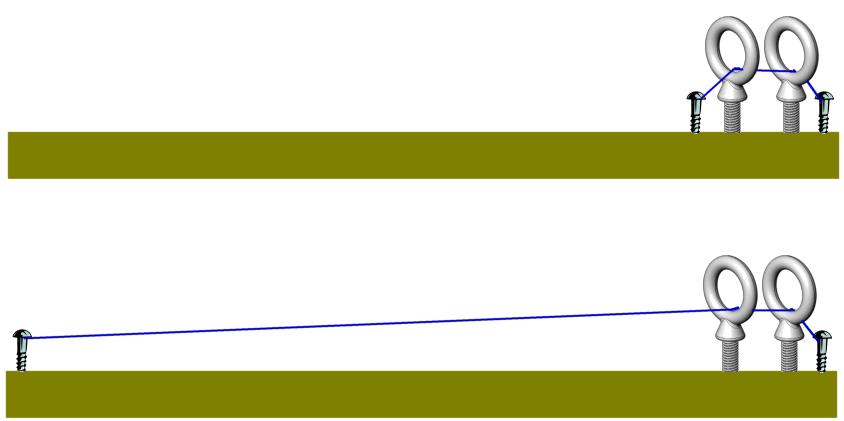Should I swap the strings on my E and A tuning machines?
There's an interesting experiment that some players have tried and posted about on some of the online forums. Some have reported that it made no difference at all, and some believe that it has enhanced the playability, tone, or both on their upright bass. What is this experiment?
They simply swapped which tuner they routed their E and A strings to. Meaning, you run the end of the E string up to the higher tuning machine in the pegbox - the one normally used for the A string, and vice-versa.
Why would you do this, other than to intentionally confuse yourself when tuning up?
The school of thought is this; on an upright bass, afterlength matters. "Afterlength" normally refers to the length of "non-vibrating" string between the bridge and the tailpiece. However, if you've ever dealt with a wolf tone before, you know that changing or weighting the afterlength can have an effect on the tone and propensity for producing those wolf tones.
Most of us haven't considered that the length of string on the upper end could also have an effect on tone or playability. And in this case, most of the folks advocating this unusual string arrangement are touting the playability improvements. Those using this technique report that it provides just a touch more "softness" to the string; an improved elasticity that comes from the extension of the afterlength. After all, at the other end of the string, there are compensated tailpieces for upright bass, which make the lower strings longer, and no one bats an eye when users of those tailpieces report an improvement in feel. So why not on the headstock end?
So yeah - I have tried this myself, on my own bass. And I can tell you that there is a marginal difference in stiffness - meaning, the E string felt a little less stiff after making the change.
It's important to note, though, that there is not a change in tension. The gauge and makeup/design of the string determines what tension that string will sound an open "E" at, and neither that gauge, nor the scale length, change when you swap machines like this. However, there's a certain "elasticity" of the string (there HAS to be, or you couldn't pluck it), and the two tension holding points being wider apart will affect the total elasticity of the string, since it lengthens the *overall* string length, which is still in play.
 Imagine this (and see graphic for illustration): you screw a couple of screws and a couple of eyehooks into a board, in close proximity to each other. You tie a piece of string from one screw, through the two eyehooks, and to the other screw. The string, between the eyehooks, is at a tension that you can measure and replicate.
Imagine this (and see graphic for illustration): you screw a couple of screws and a couple of eyehooks into a board, in close proximity to each other. You tie a piece of string from one screw, through the two eyehooks, and to the other screw. The string, between the eyehooks, is at a tension that you can measure and replicate.
Pressing down hard on the string between the eyehooks will allow you to "stretch" the string a certain distance.
Now, move one of the screws about 2 feet further away, and reattach the string (at the same pound-weight of tension as before).
I'm willing to bet that, with the "afterlength" longer, you can press the string and stretch it further than you could before. It's because the entirety of the length of the string provides a larger total elasticity, despite the tension between the two eyehooks being the same.
Now - on a STEEL bass string, and over a MUCH shorter difference of distance being applied, I'll concede that it's probably not going to be a very significant difference. But we bass players do a lot of fairly "voodoo" things to make our basses sound better, and allow us to play better. And even little things can definitely matter. So if you try this and you believe it's making an improvement, you'll get no side-eye from me. I personally do feel that there was a difference in overall "flexibility" of the E-string when I had them strung this way.
And ultimately, this experiment is essentially FREE - it don't cost nuthin'! So why not give it a go, for laughs?
On a side note; another benefit to doing this can be providing more distance between the nut and the E-string machine, which can often mean that less of the "playable" length of the thickest string on your instrument is wound onto the tuning machine (and subjecting it to sharp bends where it's not really meant to bend.) So if you have a petite or 5/8 size bass, and winding the E-string always makes you uncomfortable (or you've even broken an E string or two), this might be a useful alternative, too!
Back To: Knowledge Base (FAQs)
